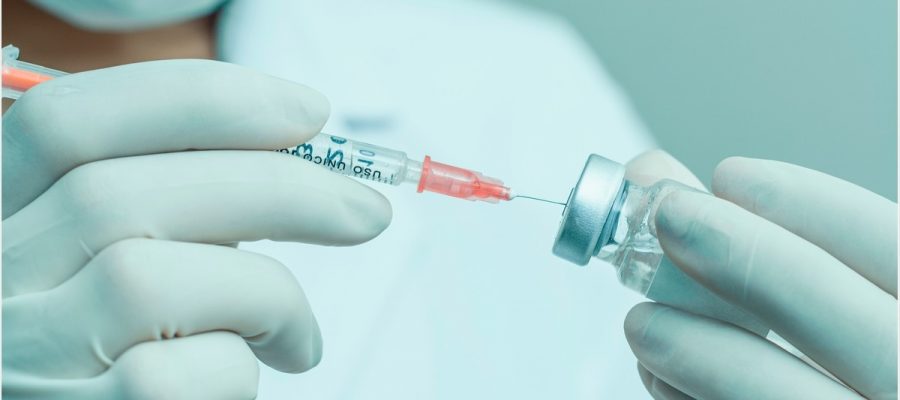In a recent Journal of Infection and Chemotherapy study, researchers investigate the dynamics of anti-spike immunoglobulin G (IgG) levels against the severe acute respiratory syndrome coronavirus 2 (SARS-CoV-2) spike protein in Japanese healthcare workers.

Study: Dynamics of anti-Spike IgG antibody level after the second BNT162b2 COVID-19 vaccination in health care workers. Image Credit: Matheus Nunes de Oliveira / Shutterstock.com
Background
The current study was conducted over a period of six months after the study participants had received the second dose of their coronavirus disease 2019 (COVID-19) vaccine. Moreover, the researchers were interested in identifying indicators of the need to prioritize an additional vaccination dose in certain populations.
Messenger ribonucleic acid (mRNA) vaccines for COVID-19, of which include the mRNA-1273 vaccine by Moderna and BNT162b2 vaccine by Pfizer/BioNTech, have been very effective in preventing COVID-19 in the real world. However, there has been a resurgence of COVID-19 cases in many countries, driven initially by the SARS-CoV-2 Delta (B.1.617.2) variant and, subsequently, by the Omicron (B.1.1.529) variant.
In response to this rise in new COVID-19 cases, a third (booster) dose of COVID-19 vaccines has been approved in many countries; however, a thorough evaluation of immunity induced by COVID-19 vaccines has not been performed. Thus, the present study evaluated the levels of anti-spike IgG six months after BNT162b2 vaccination in Japanese healthcare workers.
About the study
The study participants consisted of healthcare workers in the Haradoi Hospital in Fukuoka, Japan. Almost 76% of the 485 health workers in this hospital participated in this study. None of the participants used any immunosuppressants and were not affected by COVID-19 during the six-month study period.
While most of the participants were nurses, about 80% were women. All participants provided written informed consent before enrollment in the study. The assessments were carried out according to the Declaration of Helsinki principles and were approved by the institutional ethics review committee of the Haradoi hospital before data collection.
The study comprised two sub-studies. In Analysis-1, the researchers assessed the dynamics of anti-spike IgG levels over a period of six months following the second dose of BNT162b2 vaccination in 49 study participants. Analysis-2 assessed cross-sectional anti-spike IgG levels six months after the second dose of BNT162b2 vaccination in 373 participants.
Anti-spike IgG levels were measured using the SARS-CoV-2 IgG II Quant assay. Analysis-1 participants underwent blood testing six times for the quantitative assessment of anti-spike IgG, while Analysis-2 participants underwent blood testing to determine anti-spike IgG levels in October 2021 six months after receiving the second vaccine dose.
Analysis-1 participants also underwent blood tests to assess their levels of aspartate aminotransferase (AST), total bilirubin, alanine aminotransferase (ALT), serum creatinine, and γ-glutamyl transpeptidase (γ-GTP), using standard enzymatic assay methods.
Study findings
The median age of the participants was about 40 years, whereas the median interval between the second vaccination date and blood collection date in Analysis-2 was 185 days. Anti-spike IgG geometric mean titers were lower in the older population in Analysis-1, which persisted during the six months post-second vaccination.
The anti-spike IgG levels reached a peak one month after the second vaccination. The geometric mean IgG levels were 13,883 AU/ml in the 20-30 years age group, while they were 10,736 AU/ml in the 40-50 years group, and 5,887 AU/ml in the over 60 years age group.
Anti-spike IgG geometric mean titers decreased consistently after the second vaccine dose, irrespective of age, with a rate of decline of about 90% from one to six months following the second dose. The geometric mean IgG levels six months after receiving the second vaccine dose were 1,044 AU/ml in the 20-30 years age group, 770 AU/ml in the 40-50 years age group, and 464 AU/ml in the over 60 years age group.
In Analysis-2, anti-spike IgG levels had significant negative associations with age. This correlation was statistically significant, even after adjustment for factors such as body mass index (BMI), sex, smoking habits, allergies, drinking habits, and fever or other adverse reactions during vaccination.
The team performed logistic regression analyses to determine the factors that contributed to anti-spike IgG levels above 2,150 AU/ml six months following vaccination. In univariate analyses, fever after vaccination and age were the main factors influencing anti-spike IgGs above 2,150 AU/ml, whereas, in multivariate analyses, drinking habits and age were influencing factors.
In fact, study participants who consumed alcohol every day had significantly reduced anti-spike IgG levels as compared to those who had never consumed alcohol. None of the 53 participants who consumed alcohol daily had anti-spike IgG levels of 2,150 AU/ml or above. Factors such as sex, allergy, smoking habits, fever, or other side effects after vaccination were not significantly linked to anti-spike IgG levels.
Conclusions
The study findings show that six months after vaccination, anti-spike IgG levels were considerably lower in older individuals and those who drank alcohol daily. This may indicate the need for an additional dose of the COVID-19 vaccine for these at-risk groups.
- Ikezaki, H., Nomura, H., & Shimono, N. (2022). Dynamics of anti-Spike IgG antibody level after the second BNT162b2 COVID-19 vaccination in health care workers. Journal of Infection and Chemotherapy. doi:10.1016/j.jiac.2022.02.024.
Posted in: Medical Research News | Disease/Infection News | Healthcare News | Pharmaceutical News
Tags: Alanine, Alcohol, Allergy, Antibody, Assay, Blood, Body Mass Index, Chemotherapy, Coronavirus, Coronavirus Disease COVID-19, Creatinine, Fever, Health Care, Healthcare, Hospital, immunity, Immunoglobulin, Omicron, Protein, Respiratory, Ribonucleic Acid, SARS, SARS-CoV-2, Severe Acute Respiratory, Severe Acute Respiratory Syndrome, Smoking, Spike Protein, Syndrome, Vaccine

Written by
Susha Cheriyedath
Susha has a Bachelor of Science (B.Sc.) degree in Chemistry and Master of Science (M.Sc) degree in Biochemistry from the University of Calicut, India. She always had a keen interest in medical and health science. As part of her masters degree, she specialized in Biochemistry, with an emphasis on Microbiology, Physiology, Biotechnology, and Nutrition. In her spare time, she loves to cook up a storm in the kitchen with her super-messy baking experiments.
Source: Read Full Article
